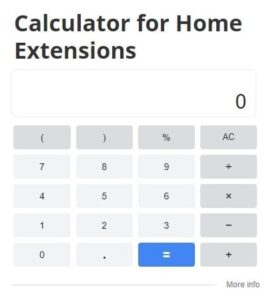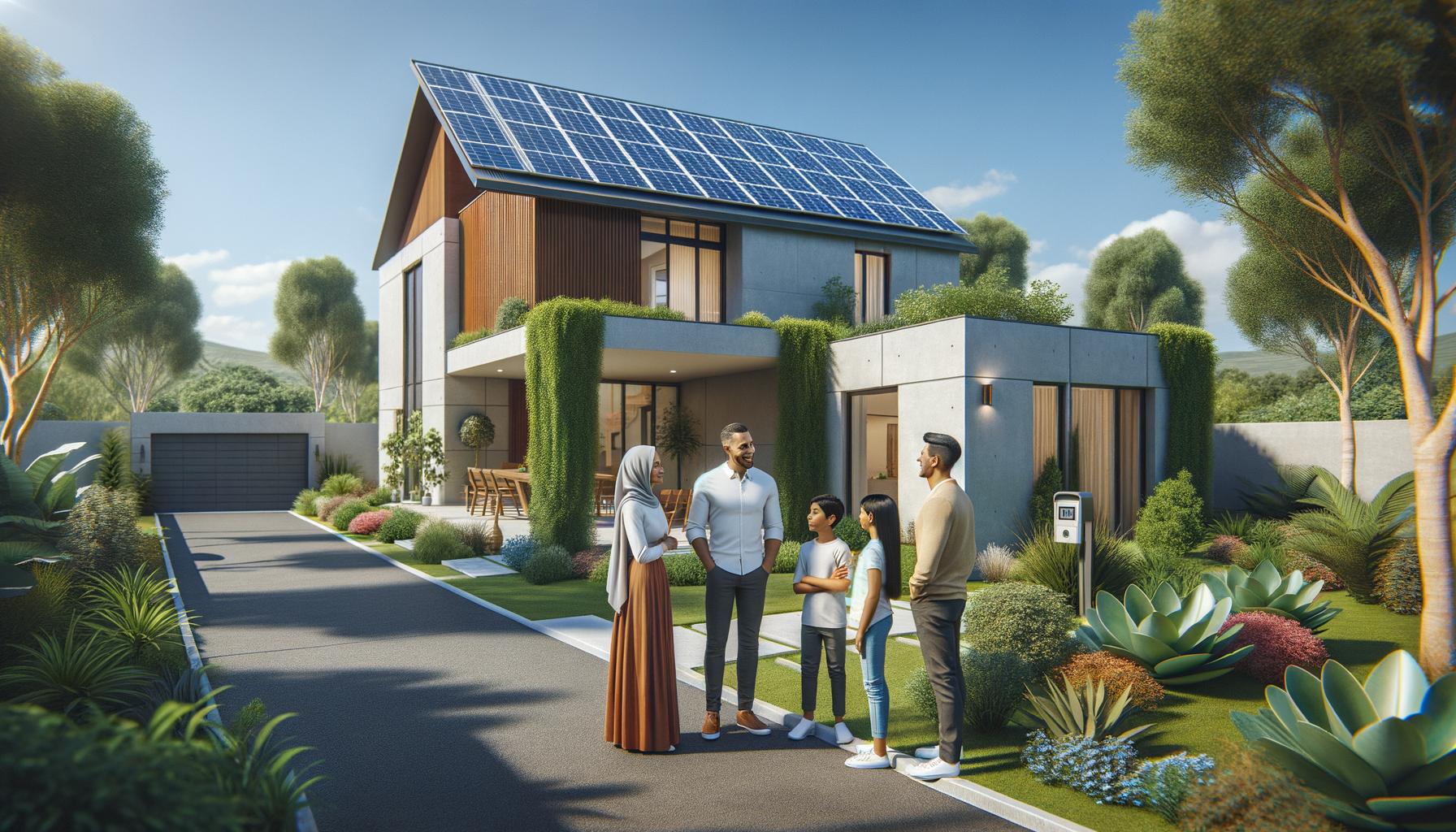
Solar energy is revolutionising the way homeowners think about their property’s value. At Home Owners Association, we’ve seen a growing interest in how solar installations can boost home prices.
Does solar energy increase home value? The answer is a resounding yes, with studies showing significant price premiums for solar-equipped homes.
This guide will explore the benefits of solar energy, the installation process, and the financial aspects that make it an attractive investment for homeowners.
Why Solar Energy Boosts Home Value
Solar energy isn’t just a trend; it’s a smart investment that significantly increases your home’s value. Solar installations transform properties into highly sought-after assets in the real estate market.
Slash Your Energy Bills
One of the most immediate benefits of solar energy is the dramatic reduction in electricity costs. The Australian PV Institute reports that homeowners can save up to 90% on their energy bills after installing solar panels. This translates to thousands of dollars in savings each year, making your home more attractive to potential buyers.
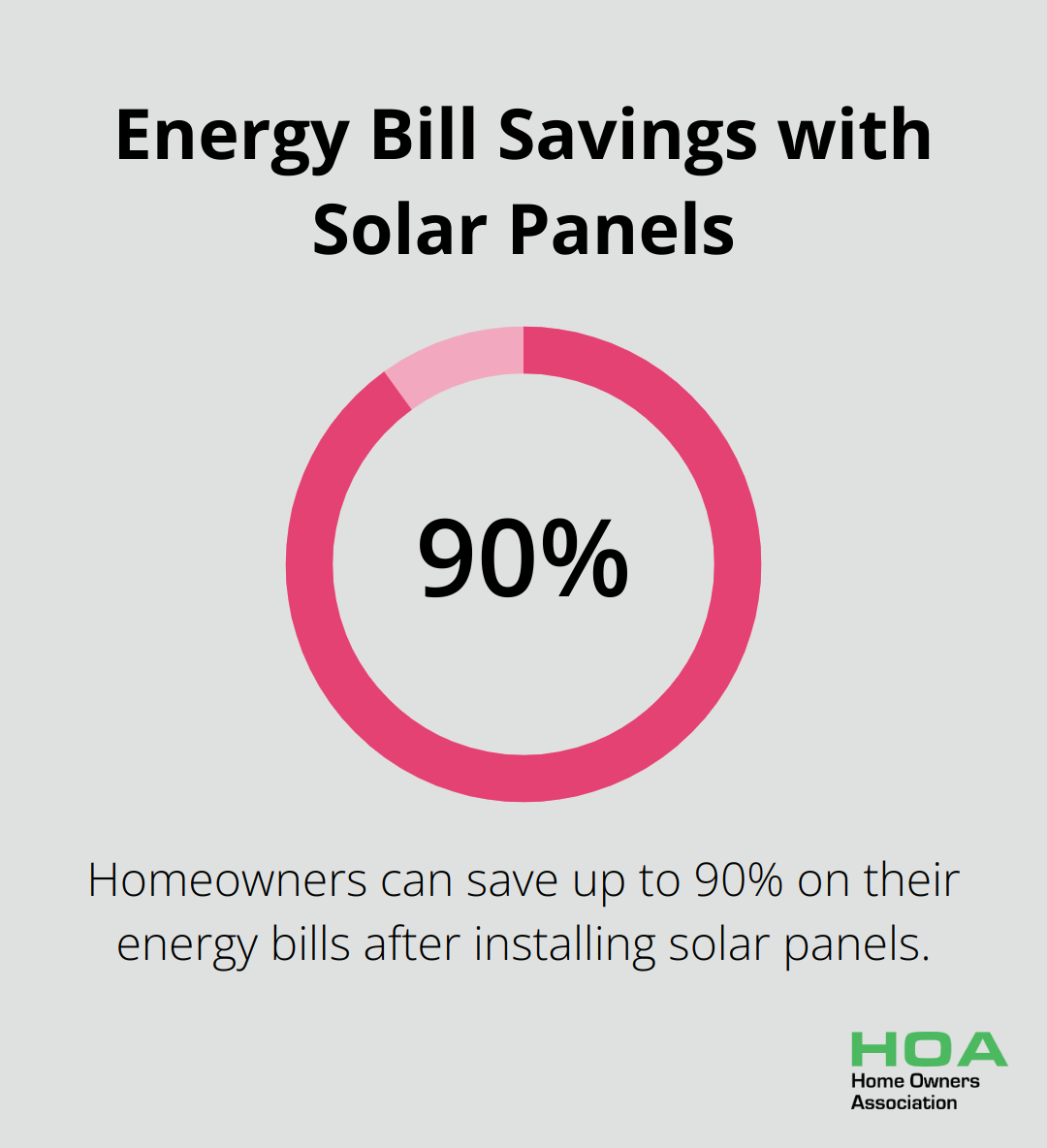
Take Control of Your Energy
Solar power gives you unprecedented energy independence. You no longer depend on rising utility costs or grid outages. Some homes with solar installations experienced a notable increase in value, with some selling for up to 6% more than comparable properties without solar. Buyers will pay a premium for this energy autonomy.
Green Living Sells
Environmental consciousness is a major selling point in today’s real estate market. A SolarReviews study found that homes with solar panels sold for approximately 6.9% more than those without. This green factor isn’t just good for the planet; it’s excellent for your property value.
Increase Your Home’s Marketability
Solar panels make your home stand out in a competitive market. Properties with solar installations often sell faster and attract more interested buyers. This increased demand can lead to better offers and a smoother selling process.
Future-Proof Your Investment
As energy costs continue to rise, the value of solar-equipped homes is likely to increase even further. Investing in solar now doesn’t just boost your home’s current value-it sets you up for potentially greater returns in the future.
The financial benefits of solar energy, combined with the appeal of sustainable living, create a compelling case for solar installation. But how exactly does the installation process work? Let’s explore the steps involved in bringing solar power to your home.
How to Install Solar Panels on Your Home
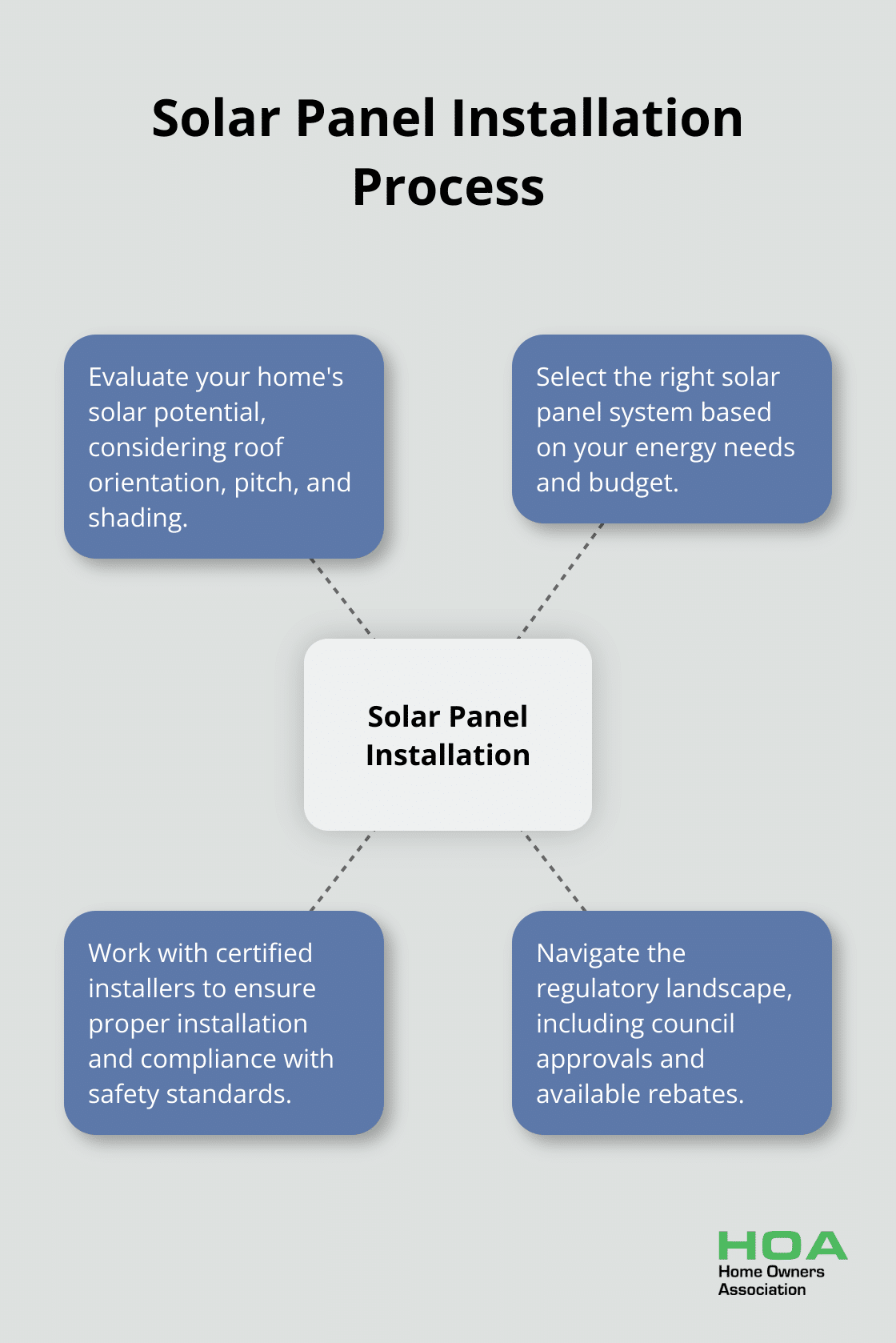
Evaluate Your Home’s Solar Potential
The first step in solar panel installation is to assess your home’s suitability. South-facing roofs in Australia receive the most sunlight. A roof pitch between 15 to 40 degrees offers ideal solar panel efficiency.
Consider any shading from nearby trees or buildings. Even partial shade can reduce solar panel output significantly. For optimal performance, your roof should receive at least 6 hours of direct sunlight daily (as recommended by the Clean Energy Council).
Select the Right Solar Panel System
Choosing an appropriate solar panel system is essential. The average Australian home requires a 6.6kW system to cover most of its energy needs. However, your specific requirements may vary based on energy consumption and available roof space.
Monocrystalline panels offer higher efficiency but come at a higher cost, while polycrystalline panels provide a budget-friendly alternative. Inverters are another vital component. String inverters work well for homes with consistent sunlight, while microinverters or power optimisers perform better for partially shaded roofs.
Work with Certified Installers
Proper installation maximizes your solar investment. Always choose a Solar Accreditation Australia (SAA) accredited installer. These professionals understand local regulations and ensure your system meets all safety standards.
Obtain multiple quotes and ask for references from previous customers. A reputable installer will provide a detailed site analysis, system design, and performance estimates. They should also explain warranty terms and after-installation support.
Navigate the Regulatory Landscape
Understanding local regulations is important. Most Australian states require council approval for solar installations, though some have streamlined processes for residential systems. Your installer should handle most of the paperwork, but it’s wise to familiarise yourself with local requirements.
Check if your property is subject to any heritage overlays or body corporate rules that might affect solar panel installation. Some areas have specific guidelines on panel placement and visibility from the street.
Explore available rebates and incentives. The federal Small-scale Renewable Energy Scheme (SRES) offers financial incentives for eligible solar installations. Installing an eligible system allows the creation of small-scale technology certificates (STCs) with a value that can be redeemed by selling or assigning them. Many states also provide additional rebates or interest-free loans for solar systems.
The installation of solar panels is a significant step towards increasing your home’s value and energy efficiency. As you move forward with your solar project, it’s essential to consider the financial aspects of this investment. Let’s explore the costs, savings, and potential returns associated with solar energy in the next section.
What Are the Financial Implications of Solar Installation?
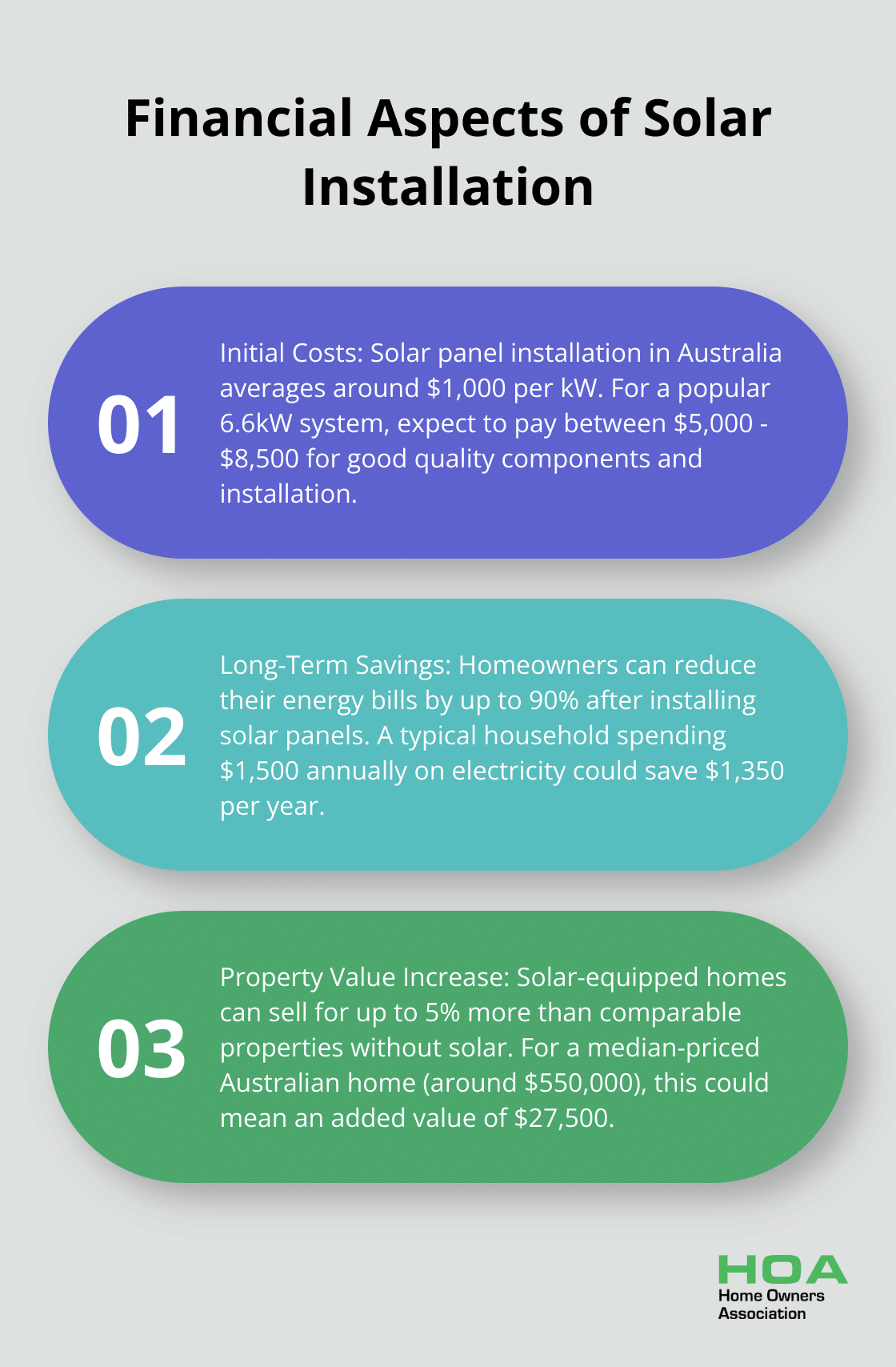
Initial Costs and Long-Term Savings
Solar panel installation in Australia averages around $1,000 per kW. For a popular 6.6kW system, expect to pay between $5,000 – $8,500 for good quality components and installation. While the upfront cost seems high, it’s a long-term investment.
The Australian PV Institute reports that homeowners can reduce their energy bills by up to 90% after installing solar panels. A typical household spending $1,500 annually on electricity could save $1,350 per year. Over a solar system’s 25-year lifespan, potential savings exceed $33,750 on energy costs.
Government Incentives Reduce Expenses
The Australian government offers substantial incentives to make solar more accessible. The Small-scale Renewable Energy Scheme (SRES) provides small-scale technology certificates (STCs) for eligible solar installations. Selling or assigning these STCs can reduce upfront costs by thousands of dollars.
Many states provide additional rebates. Victoria’s Solar Homes Program offers rebates up to $1,400 for solar panel systems. New South Wales provides interest-free loans up to $14,000 for solar-battery systems. These incentives significantly lower the initial investment.
Property Value Increase
Solar panel installation can substantially increase home value. Solar panels, energy-efficient systems and advanced insulation will become more essential in the Sunshine Coast property market by 2025. In Sydney, solar-equipped homes sold for an average of 5% more, driven by rising electricity costs and increasing sustainability awareness.
For a median-priced Australian home (around $550,000 as of 2025), a 5% increase equates to $27,500 in added value. This boost often surpasses the initial installation cost, making solar an excellent investment even for those planning to sell their home soon.
Return on Investment Analysis
Solar installations offer an impressive return on investment (ROI). Many homeowners see a full return within 3-7 years, considering annual energy bill savings, increased property value, and government incentives.
A sample breakdown:
- Initial cost (after rebates): $8,000
- Annual energy savings: $1,350
- Increase in home value: $27,500
In this scenario, energy savings alone cover the system cost within 6 years. The increased property value makes the ROI even more attractive.
As electricity prices continue to rise (they’ve increased by an average of 3% annually over the past decade), savings and ROI will likely grow over time.
Long-Term Financial Benefits
Solar energy provides more than immediate savings. It offers long-term financial stability and protection against rising energy costs. As utility rates increase, solar-powered homes become increasingly valuable.
The durability of modern solar systems (with lifespans of 25-30 years) ensures decades of reduced energy costs. This long-term outlook makes solar an attractive option for homeowners planning to stay in their properties for extended periods.
Final Thoughts
Solar energy transforms homes into valuable assets, increasing property values by up to 6.9%. The installation process requires careful planning and professional expertise, but the long-term benefits outweigh the initial investment. Government incentives, substantial energy savings, and increased home value often result in a positive return within a few years.
Solar installations future-proof homes against rising energy costs and position them as attractive, eco-friendly options in the real estate market. The question “Does solar energy increase home value?” has a clear answer: yes, it does. The long-term value proposition of solar energy extends beyond individual benefits, contributing to a more sustainable future for all.
We at Home Owners Association encourage you to consider solar energy as a valuable addition to your home. Our expertise in the Melbourne market and commitment to empowering homeowners can support you in making informed decisions about solar installations and other home improvements that enhance your property’s value and quality of life.





